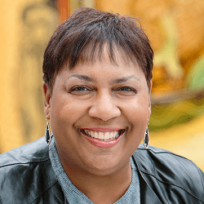5 Numbers Women Need to Know to Boost Their Financial Confidence
Do you want to achieve greater financial peace of mind? Here’s where to start.
By Tama Smith
Brighton Jones recently launched Money and Relationships, a three-part webinar series hosted by our Women Living a Richer Life initiative. We started this critical work because too many women don’t feel empowered financially, despite reports indicating that women will control two-thirds of the nation’s wealth by 2030.
For some women, this is already something of a reality in their households. Our data shows that 95 percent of women will be the primary financial decision-maker at some point in their lives, yet 81 percent of women say they don’t have the financial confidence they need to take on the role.
To begin the journey to financial empowerment, we’re sharing five numbers women need to know to increase their financial confidence today:
1. Spending and Savings
Many people don’t know their monthly spending and savings amounts, but these numbers are essential because they build on everything else.
For example, if you’re trying to figure out whether to keep a home during a divorce or move on, you can only run those calculations if you know your monthly spending. Or maybe you get an amazing job offer and have to move across the country. You need to know how your spending and saving stacks up in a new market.
We recommend starting at the simplest level. Take a look at last year’s credit card statements and year-end bank statements. Check your 401(k) or IRA balance. What you find there will drive the next four numbers.
2. Net Worth
Net worth is your total assets minus total liabilities, and you need to track this number each year because it will fluctuate.
If you aren’t tracking your net worth each year, you may be unclear on your asset allocation (the mix between stocks, bonds, and cash). You might be missing opportunities to pay down debt when interest rates are really low.
Ideally, you want a steady increase. But if you have dips over time, you need to know where those dips come from. Do you have the wrong mix of investments? Did an investment go belly up?
When you have that information, you’re better equipped to figure out the next three numbers.
3. Vocational Freedom
Vocational freedom is having sufficient funds to do just about whatever you want. To find vocational freedom, you need to look at three numbers:
- How much you need to save. This largely depends on your spending patterns. It’s a common saying that in retirement, you spend 80 percent of what you made while working, but that’s not true anymore. Early in your vocational freedom, you’re likely to travel and do other fun things. Then later, health care costs rise. The safest assumption is that your spending won’t change much.
- How to invest in the right assets. Achieving vocational freedom isn’t about picking the next hot stock. Once you’ve decided how much you need to save to maintain your standard of living, it’s time to look at the big-picture mix between stocks, bonds, and cash that you need to achieve that standard.
- The rate at which you can draw money from your investments. Once you have those numbers, you’ll know where you’re aiming, and things will become much clearer and more peaceful.
4. Investment Mix
If you and your neighbor save the same amount and invest it over the same period, you will likely have very different outcomes.
That’s because asset allocation strategies can vary. The biggest difference between your two portfolios will not be that one of you owned a hot stock and the other one didn’t. It will be the mix you chose and the way you shifted it over time between stocks, bonds, and cash.
There’s another piece in asset allocation—the style of investing. Think of it like you’re driving down a highway. You can drive down the right lane with your seatbelt on and listen to a podcast. This is evidence-based investing. It’s what we do here at Brighton Jones. Then there’s the left lane, where people are weaving in and out of traffic. That’s where money managers are looking to beat the market. History tells us that positive results happen with much greater frequency with a right-lane approach to investing.
5. Cash Buffer Plan
Cash buffers are how you think about money. People tend to get nervous when markets go up and down because we don’t want our standard of living to change. Ideally, you can construct a portfolio that allows you to have enough cash set aside that no matter what happens in the market, you’ll be okay because your day-to-day living expenses are covered. When you have that security, you can afford to take more risks and still sleep at night.
Closing the Financial Readiness Gap
When you know these five numbers, you know more about your finances than 90 percent of adults and are, therefore, 90 percent of the way toward financial wellbeing.
So, do you know your numbers?
In part II of our series, we discuss how to find financial compatibility with the one you love.
Tama Smith leads the Women Living a Richer Life initiative at Brighton Jones.





